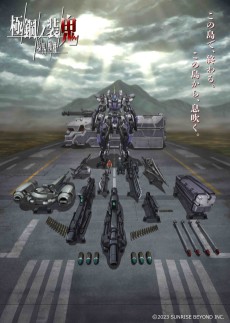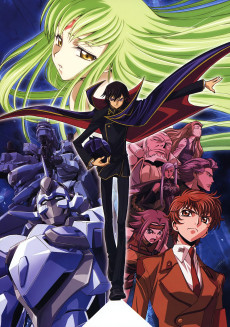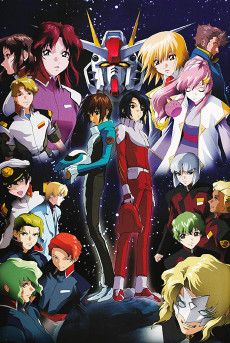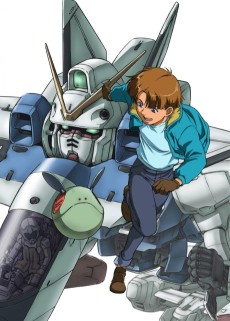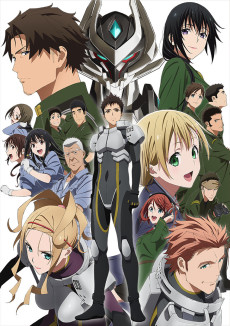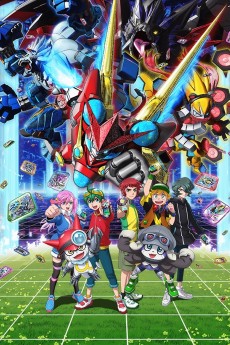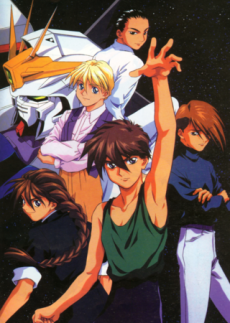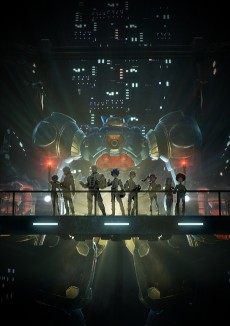KYOUKAI SENKI
STATUS
COMPLETE
EPISODES
13
RELEASE
December 28, 2021
LENGTH
24 min
DESCRIPTION
In 2061 AD, Japan is dominated. Divided and ruled by the four major economic blocs of the world, the Japanese people spent their days oppressed as subjugated citizens. Japan became the front line of the world where AMAIM, a human-type special mobile weapon deployed by each economic zone, strode about.. One day, Amou Shiiba, a boy who loves machines, meets i-LeS (autonomous thinking AI) named "Gai," and this leads him to throw himself into the battle to reclaim Japan, by piloting the AMAIM "Kenbu" built by himself.
(Source: Crunchyroll)
CAST
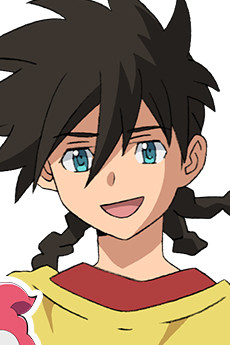
Amou Shiiba
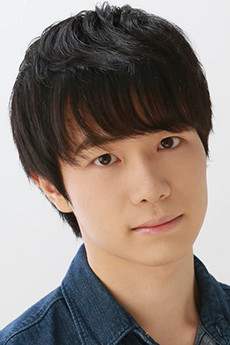
Gen Satou
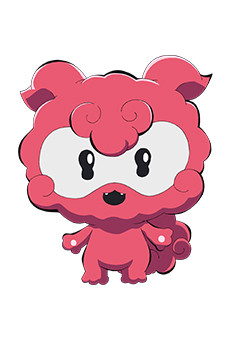
Gai

Natsumi Fujiwara
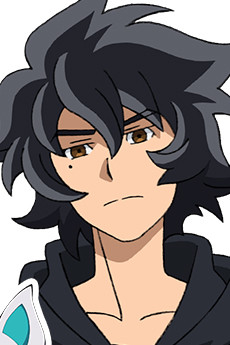
Gashin Tezuka
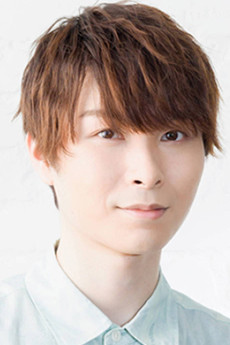
Yuuto Uemura
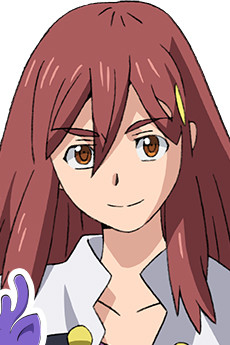
Shion Shishibe

Kana Ichinose
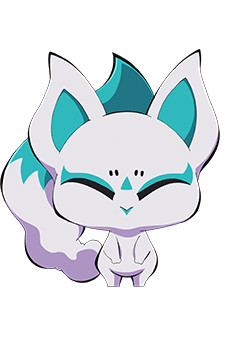
Kei

Yui Ishikawa
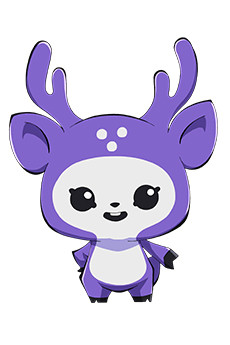
Nayuta
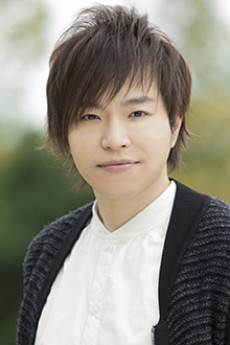
Taishi Murata
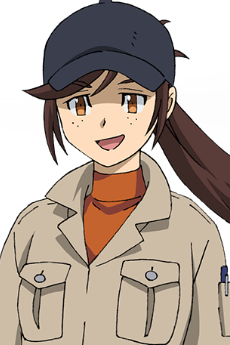
Misuzu Maki

Ayaka Nanase
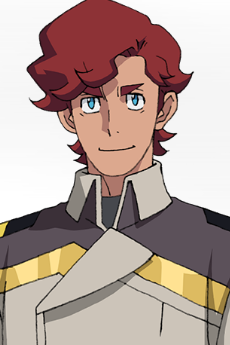
Brad Watt
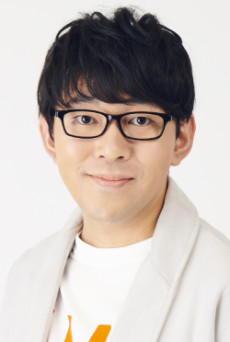
Yuuki Ono
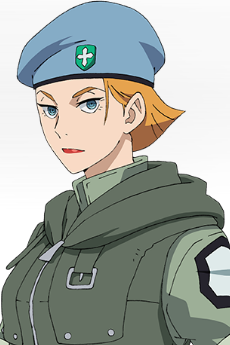
Kate Burn

Shizuka Ishigami
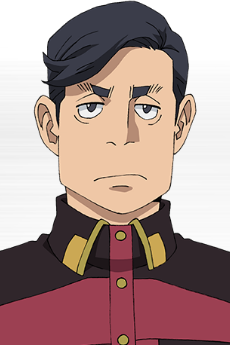
Ho Guan
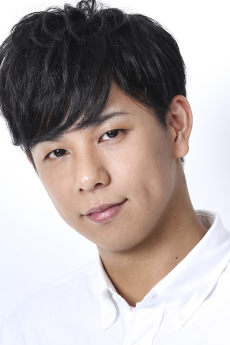
Masaaki Mizunaka
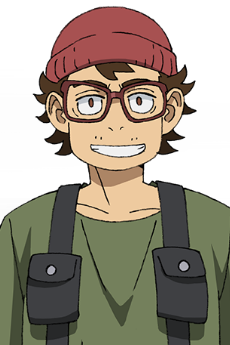
Takeru Muramatsu

Shin Matsushige
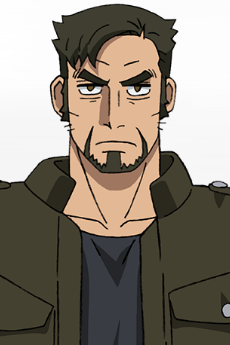
Gouken Kumai
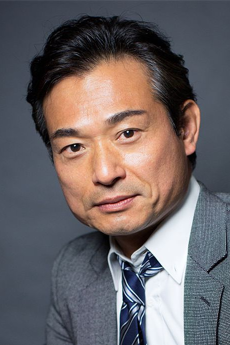
Masaki Terasoma
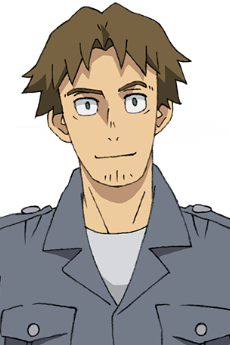
Eiji Umasaki

Kazuhiro Nakaya
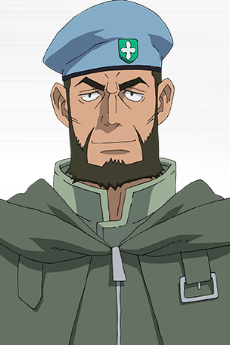
Jeffery Wilson
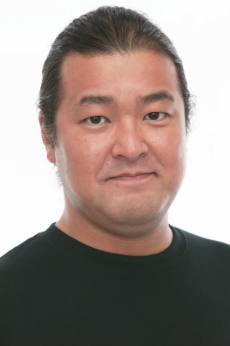
Tetsu Inada
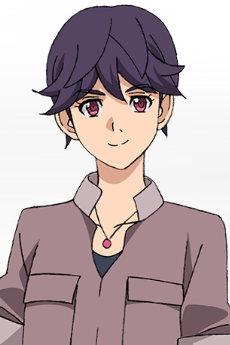
Risa Kouzaki

Masumi Asano
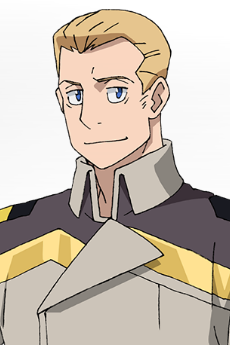
Raymond Hardy
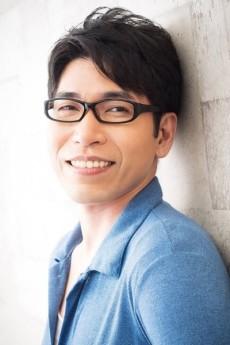
Tarusuke Shingaki
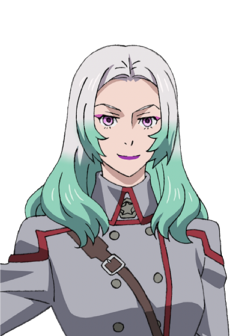
Dahlia Lvov

Aya Endou
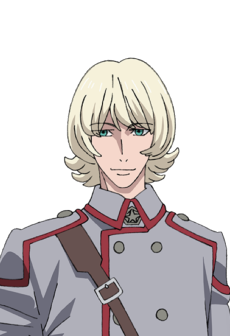
Alexei Zelenoy
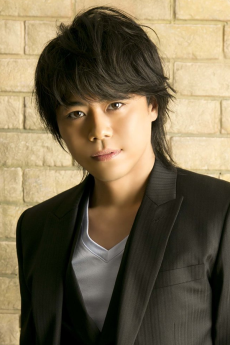
Daisuke Namikawa
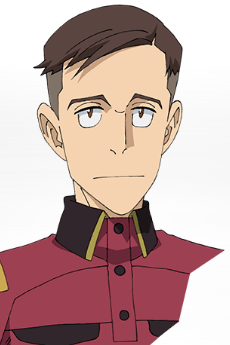
Sun Chung
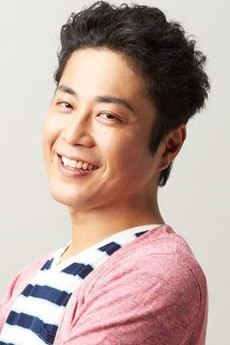
Kazumasa Nakamura
EPISODES
Dubbed
RELATED TO KYOUKAI SENKI
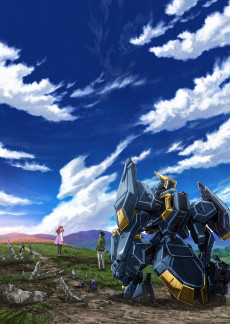 ANIME FantasyKyoukai Senki Part 2
ANIME FantasyKyoukai Senki Part 2REVIEWS

SpiritChaser
15/100Painfully bland. Being an all 2D animated mecha with no CGI gave me hope but it was lazy 2D animation.Continue on AniListKyoukai Senki is so painfully bland I had to drag myself to finish it. The constant "Amou saves the day" and slice of life like episodes dragged it down too much. The plot progresses so slowly, and though I tried to be patient and give it a chance, it just wasn't done well at all. It was exciting to see a mecha series that would focus on 2D animation and completely ditch CGI, but it did an awful job in doing that. Lots of times the animation is Scarlet Nexus tier bad in that it uses still frame fights with flashy lights and cheap effects to make it look like animation. You can tell some episodes threw the animation completely out the window while only a few were consistent.
Amou is in that pile of boring protagonists. He hardly felt memorable and his character barely progressed anywhere. Yes, he wants to be a hero and save people, but the writing is so shallow and hollow about it. To fix him, the first thing I would do is change the hideous yellow shirt he wears. For being a political series, that was done awful and underwhelming. Some of the main characters barely even got any development, and they can't cheap out on me and say to wait for the 2nd cour where it could get better because the 1st cour should be strong as well.
Shion had potential to be a great character but the series would rather focus on her making clay pots than fighting for the resistance.
Brad Watt is a cocky and smug high IQ individual that can scientifically breakdown a mecha fight for you just by staring at the dirt they fought on which I found hilariously absurd.
I understand Gashin's struggle under the context his father, but his character mostly felt annoyingly bitter.
The Pokemon were annoying, especially Gai. How could they reduce Violet Evergarden's voice actor down with a minor role voicing a hideous white blob with a boomerang mouth.
This all ties into many of the characters, the heroes and villains, in that they did not have anywhere near enough screen time to be relevant, and many just disappeared since the staff figured they'd just come back in the second cour.
Ghost is the only part of Kouykai Senki that I enjoyed. It's a learning AI that is so advanced it should have learned to jump out of the series and go after the writers before they can think of a cheap way to write him off since it is so obscenely strong. The main cast decide that in order to beat it, they have to do the same thing that doesn't work over and over again. Still, I enjoyed the type of destructive force Ghost can be.
With a second cour over the horizon, the suffering will continue. Still, the staff got carried away and left far too much unanswered and unresolved. At least the ending song and last episode were nice, though the episode was all action and nothing more.

Deago
47/100A war glorifying Japanese nationalism propaganda, yet an engaging political mecha anime.Continue on AniListThe mecha genre has undergone significant evolution, raising questions about its current relevance. While some detractors dismiss AMAIM Warrior at the Borderline as a cheap Gundam knockoff, a closer examination of modern mecha titles, including Gundam itself, reveals how the genre has transformed to cater to the preferences of a new generation. Traditional tropes and elements have been reimagined and reshaped, aligning with the changing tastes and demands of contemporary anime audiences. This observation is not solely based on personal claims; even Takuya Okamoto, the producer of Witch from Mercury at studio Sunrise, acknowledges that classic Gundam titles no longer resonate with modern viewers. This phenomenon extends beyond mecha alone and can be seen across various subgenres.
Many long-time fans and seasoned mecha enthusiasts have understandably grown disenchanted with the genre, shifting their attention to alternative forms of entertainment. Mecha anime has become inundated with tired elements and tropes, including school settings, waifu-baits, edgy immature presentation, otaku culture, horny fanservice, and moe character designs. These prevailing trends have alienated the older generation of mecha fans who yearn for a departure from the modernised and formulaic aspects prevalent in contemporary mecha titles.
However, in this landscape of fatigue, a handful of lesser-known titles, such as AMAIM, have boldly reintroduced old-school political mecha tropes into the modern era. Regrettably, due to its departure from conventional elements, the series has largely escaped the notice of both traditional mecha enthusiasts and contemporary audiences. The veterans have grown disillusioned, hesitant to venture into new mecha titles, while fans of the modern approach find AMAIM unappealing compared to their usual fare. Consequently, the series finds itself trapped in a paradoxical position, failing to capture the attention of either group.
That being said, while AMAIM successfully avoids employing tropes that don't belong in a political mecha, and that retro mecha fans, including myself, have grown weary of in anime, it is crucial to note that the mere avoidance of these tropes does not automatically make an anime exceptional. It takes more than the absence of undesirable elements to create a truly remarkable and memorable work.
AMAIM Warrior at the Borderline, another production from Sunrise and helmed by the veteran director Habara Nobuyoshi, renowned for his niche 'cult classic' mecha anime like Fafner (dubbed a 'discount Evangelion') and Broken Blade (labelled a 'discount Gundam'), offers a simple yet intriguing premise rooted in political war drama. The story unfolds in a world where four rival nations, where not America, not Russia, not Australia, and not China, vie for control over Japan. Concurrently, a Japanese resistance military faction named Yatagarasu, fights to reclaim their homeland, joined by unexpected allies from not Germany (and not Italy, if this is going where I think it's going), adding another layer of complexity to the conflict. This multi-faceted setup presents a stage populated by at least five different nations, turning Japan into a war-torn battleground.
What sets AMAIM apart from the two abovementioned titles is its ability to strike a delicate balance; rather than strictly focusing on angsty teenagers battling monsters with giant robots or delivering a run-of-the-mill political war drama with a fully adult cast. It features fewer emo kids fighting in a war that involves a dangerous and enigmatic entity—an unmanned robot called 'Ghost' which is scary and nearly invincible.
The anime begins by immersing viewers in a dystopian future where Japan teeters on the edge of collapse due to economic failures, an aging population, and low birth rates. This setting effectively establishes the dire state of the country and the need for external assistance. The audience is introduced to a Japan on the brink of societal breakdown, where powerful nations and allied forces respond to the crisis by deploying highly advanced humanoid war machines called AMAIM. This deployment aims to 'aid' Japan during this tumultuous time but ultimately leads to the Boundary War. The anime successfully establishes a dystopian narrative that delves into profound themes such as identity, nationalism, and personal connections within a struggling Japan. By providing a vivid depiction of a society on the verge of collapse, it introduces viewers to a diverse cast of characters who navigate this complex and hostile environment.
The narrative follows Amou Shiiba, a young scavenger who navigates the divided landscape of Japan, scavenging discarded AMAIM parts. Through Amou's experiences, the anime prompts viewers to contemplate the consequences of external intervention and occupation on a nation's identity and the lives of its individuals. The tension between Japanese locals and foreign forces highlights the cultural and social divide within a multicultural society. It raises questions about the clash of values and power dynamics in a world where occupation and resistance exist side by side. The presence of Japanese terrorists and extraterritorial jurisdiction hints at a complex power dynamic and foreshadows potential conflicts that arise from the occupation.
The anime explores themes of hopelessness and limited prospects within a struggling society through Amou's introspective monologues. The socio-economic challenges facing Japan, including high unemployment and a declining GDP, permeate the narrative, creating an atmosphere of despair and frustration. For Amou, his connection with machines becomes a form of escapism and a coping mechanism in a world where he can exert control and agency. It also touches upon the concept of identity and the anonymity of online relationships. Amou's interactions with his online friends, whose true identities and locations remain unknown, underscore the significance of shared interests and virtual communities as sources of support and camaraderie.
Amou, the central protagonist, after becoming a fugitive, finds himself taken to the base camp of Yatagarasu, where he is exposed to the operations and ideals of the resistance group. The base camp serves as a central hub for individuals who are dedicated to fighting for Japan's independence. It is here that Amou is given an opportunity to align himself with a cause greater than himself and become part of the struggle. Amou, who was previously focused on personal survival and evading capture, is now faced with a decision that will shape his future. The leaders of Yatagarasu present Amou with 'compelling reasons' and motivations to join their fight; they even have Risa try hard to convince Amou to join their group; she even strips her shirt for Amou so that the young teenage boy knows if he joins the Yatagarasu, he will get to hang out with some hot chicks...what? 'That scene was not sexualised', you say? But, in-universe, it's still sexy; I mean, it may not be sexy to us, but it was sexy for him, you know what I mean? Anyway, jokes aside, Amou was still hesitant and reluctantly joined, only to leave them and then rejoin, lol. What an obnoxious, indecisive sucker Amou was. But at least the Yatagarasu respected his choice, even though they were fine with the idea of recruiting child soldiers, right?
The anime continues to depict intense action sequences and emotional character development as the team faces challenges and confronts the enemy. The importance of teamwork and the resilience of the human spirit are highlighted throughout the battles. The narrative also delves into themes of revenge, loss, and the complexities of decision-making in times of war. It introduces the central conflict between the Japanese resistance and the occupying forces, showcasing the bravery and sacrifices made by the young characters involved in the resistance movement. The story sets the stage for political maneuvering, as well as the introduction of the Ghost robot as a formidable threat. It reveals further political complexities and introduces a neutral country such as Brenson Corp, expanding the scope of the conflict and highlighting the multi-layered nature of the war.
While some may dismiss the premise as mere Japanese nationalism propaganda, which holds some truth, it is essential to recognise that the quality of a story extends beyond its thematic exploration. Even if it were propaganda, it would not automatically render the story bad. The key lies in providing engaging storytelling while subtly critiquing the political themes at play. Unfortunately, one of the weaknesses of AMAIM is its lack of moral ambiguity. The series leans towards a blatant and preachy narrative in favour of nationalism, presenting anti-nationalist characters as either selfish and power-hungry or simply dim-witted, pathetic pacifists. This oversimplification robs the story of the potential for a nuanced exploration of complex political ideologies and the shades of grey within them.
Moreover, the credibility of the war setting is another point where AMAIM stumbles. In a genre centered around mechanised warfare, it becomes crucial to maintain a level of realism and believability in the strategic aspects of the conflict. While AMAIM isn't pretentious and doesn't try to be strategically complex, or involves chess in its battles, it is still important to show plausible strategies and tactics in war. AMAIM often falls into the trap of employing contrived plot points to drive the war forward. The war loses its meaning when a few giant robots easily overpower entire armies or launch sudden attacks on supposedly secure cities without enemies' prior knowledge. This diminishes the effectiveness and credibility of other units, undermining the tension they should bring to the story. When a single giant robot can effortlessly destroy not just one, but two military platoons, it becomes more akin to a battle-shounen disguised as a political war mecha.
Some may criticise the anime for glorifying war, and they are not wrong based on what the anime has presented in this installment. Amou, the protagonist, acted like a 'wuss' and refuses to 'get in the damn robot' to fight alongside the Japanese resistance military. Meanwhile, his angry and vengeful partner, Gashin, constantly urges Amou to join them and fight the invaders. Eventually, Gashin is proven right: 'You can't protect those you love without fighting, you can't stop war without engaging in it, you must wage a war to end wars; you must crush your enemies, see them driven before you, and to hear the lamentations of their women! Where is your sense of patriotism and nationalism?! Yes, you must murder people to reclaim former glory of your homeland!' Except you don't, 'cause you're fighting unmanned robots, well, most of the time. It's still dull! The futuristic sci-fi setting, with highly intelligent artificial intelligence, may excuse the absence of traditional war drama tropes, but can we consider it an intriguing war drama when there are minimal civilian casualties and enemy soldiers barely get killed? I wanted to see more murdering and explosions goddammit! So, here you go, anti-war literature lovers who dislike war glorification. You somewhat got what you wanted with the pacifist 'wuss' excuse of a protagonist, even though the show consistently calls out his lack of 'solid practical principles'.
While the storytelling in question may draw criticism for its perceived glorification of war and departure from classical war drama tropes, it offers thought-provoking elements that delve into deeper themes. The anime dares to question the necessity of violence as a means to achieve goals, challenging the protagonist's pacifist stance and exploring the profound consequences of colonisation on culture. In this regard, it presents a morally grey landscape that encourages viewers to ponder the practical principles and ethics guiding the characters' actions.
The narrative raises pertinent inquiries regarding the motivations behind warfare and the vested business interests at play. It underscores how war serves as a catalyst for the proliferation of weapons and resources, creating a lucrative ecosystem that satisfies the ambitions of profit-seeking individuals. The cycle of war drives the demand for more weapons and war-related resources, perpetuating a circle of commerce that brings satisfaction to greedy businessmen.
The anime also deserves credit for its skillful development of the side characters, especially from the American military, most notably Captain Brad Watt. Through their portrayals, the anime conveys a significant message about the importance of nationalism and the quest for independence. It highlights the potential loss of Japanese culture in the absence of resistance against colonisation and emphasises how the destructive force of colonisation erodes cultural identities. The concept of 'cultural suicide' emerges during a conversation between Captain Brad and his comrade, where the captain, despite being an adversary to the Japanese nationalists, raises this point. This exchange not only serves as a commentary on anti-colonial nationalism but also helps create sympathetic antagonists, challenging the notion that every soldier is inherently driven by nationalist fervour.
One plot point that perplexes me is how the Americans managed to gather data and create simulations of MAILeS-type AMAIM from the incident at Yatagarasu's base. They had no direct involvement in the battle and were unaware of the terrorists' location prior to the attack, ruling out the possibility of espionage or having a mole within Yatagarasu. Although they eventually discovered the enemy's base after the sudden assault and arrived at the scene later, it was after Yatagarasu had supposedly destroyed evidence, and the Asian military had already cleared the area before the Americans. The notion that detailed data about the three giant robots was obtained solely through the captain's examination of the aftermath seems implausible to me. It feels forced and unconvincing, given the weak explanation provided.
Furthermore, the narrative includes infodumps that present crucial information and raises important questions that should have been addressed earlier in the story, such as the origins of Yatagarasu's MAILeS-type AMAIMs and i-LeS. These revelations contribute to the story's depth and draw attention to significant aspects that warrant earlier exploration. The anime could have integrated these details more seamlessly into the narrative to avoid the feeling of delayed exposition.
In terms of tone, AMAIM skillfully blends elements of gloominess with occasional childish humour. Characters like Gai, the AI 'Digimon', offer comic relief without undermining the serious nature of the anime. This contrast provides hope for the emotionally broken teenage protagonists who lack nurturing parents and emotional support. This balance of light-hearted moments with the darker themes adds layers to the characters' emotional journeys.
Visually, AMAIM skillfully portrays a post-apocalyptic landscape characterised by dilapidated cityscapes and war-torn environments. The deliberate use of contrasting colour palettes, with vibrant hues for the AMAIM machines juxtaposed against desaturated tones for the surroundings, reinforces the sense of a bleak and divided world. This visual dichotomy underscores the stark contrast between the advanced technology of the AMAIMs and the crumbling state of society, further emphasising the themes of hope versus despair and technological advancement versus societal decay.
The animation quality of the show avoids the common modern anime reliance on CGI, although it remains at an average level. While the character designs may not be excessively appealing, they are also not off-putting. One commendable aspect is that the girl in the team isn't sexually designed, and it's refreshing to see a respectable and modest female character design in a time when sexualised designs have become the norm in anime.
Additionally, the mecha designs effectively convey their respective attributes without relying on excessive plot explanations. For instance, you can easily discern the specialisation of the main three mecha robots through their shapes, weapons, and maneuvering. Kenbu is specialised in defense, featuring larger shields and a balanced offensive capability. On the other hand, Jogan is clearly designed for long-range combat, equipped with firearms, a sniper, and grenades. Finally, Reiki is purely offensive, exhibiting agility, speed, wings for flight, and a spear as its weapon.
Overall, AMAIM's journey was a mixed bag: a strong start, a weak middle, and a mediocre conclusion. AMAIM may not reach the pinnacle of excellence in the mecha genre, but hey, it is still better than most 2020s anime and far superior to the majority of modern anime offerings. Strong introduction, captivating world-building, and intense mecha battles. Then it drops into a shaky middle—pacing issues, characters on life support. The plot loses stream. Conclusion is mediocre, but it tries. Doesn't always deliver, but has flashes of brilliance on occasion. Ambitious themes, thought-provoking moments, and flashy mecha battles—a treat for mecha fans. Consider it, but keep your expectations in check!
SIMILAR ANIMES YOU MAY LIKE
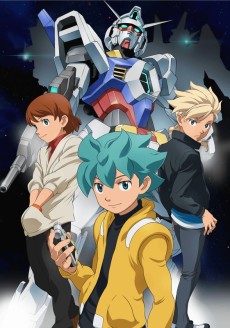 ANIME ActionKidou Senshi Gundam AGE
ANIME ActionKidou Senshi Gundam AGE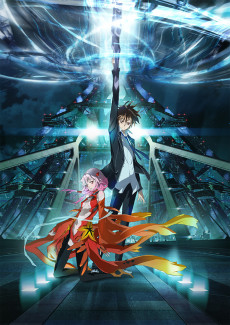 ANIME ActionGuilty Crown
ANIME ActionGuilty Crown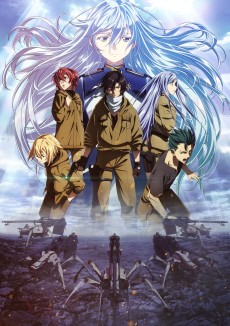 ANIME Action86: Eighty Six
ANIME Action86: Eighty Six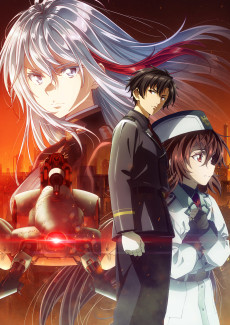 ANIME Action86: Eighty Six Part 2
ANIME Action86: Eighty Six Part 2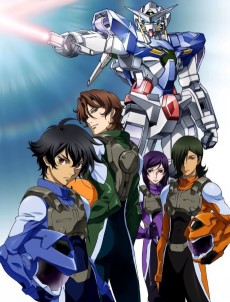 ANIME ActionKidou Senshi Gundam 00
ANIME ActionKidou Senshi Gundam 00
SCORE
- (2.95/5)
TRAILER
MORE INFO
Ended inDecember 28, 2021
Main Studio Sunrise Beyond
Favorited by 89 Users
Hashtag #KK_SENKI #境界戦機


